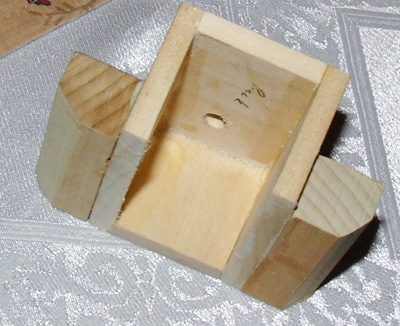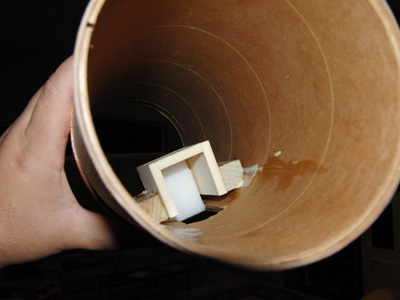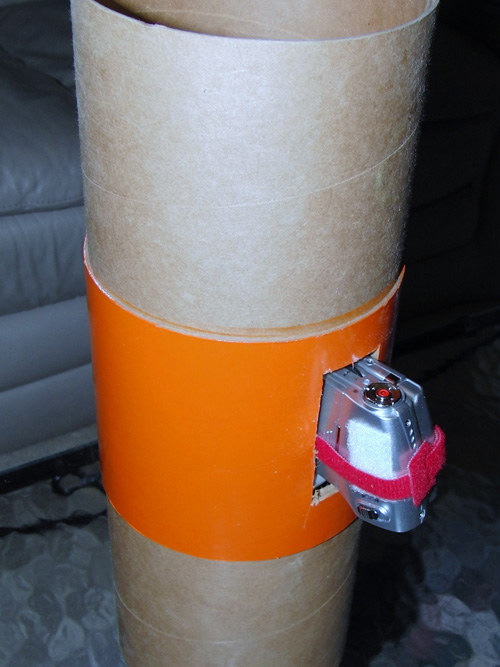Jadebox:
Got any pictures of how it looks mounted?
Sorry ... I normally include or link to photos, but I was in a hurry.
Here's the "box" that I put in the rocket:
The hole is where the screw I thread in the camera goes.
Here's what the box looks like mounted in the body tube. There's a rectangle cut out of the tube the size of the box:
Here's what it looks like with the camera in place from inside the tube:
Note, the Velcro strap around the bottom of the box. It's glued to the box so it doesn't get lost. And, this is the rocket's electronics bay, so I didn't have to protect the camera from the ejection charge.
Here's what it looks like from the outside:
I had the camera stick out a bit because it's mounted near the top of a long rocket and I was afraid that all you would see is the body of the rocket if it didn't stick out so much. As it turns out, you can't see any of the motor's flame after lift-off, so I probably should have mounted the camera a little deeper into the tube.
Here's the camera outside of the rocket:
You can see the screw I added that fits in the hole in the box. When I install the camera in the rocket, I press it down on the foam that's glued to the bottom of the box and insert the screw in the hole. The foam then pushes up on the camera and causes the screw to hold the camera in place. This makes it easy to wrap the Velcro around the camera and secure it. The piece of Velcro on the camera keeps the strap from slipping off.
Here's what it looks like when I insert the camera into the rocket:
And, finally, you can see the on-board video at:
https://www.rocketreviews.com/roger-smiths-youbee.html
I first used this method of mounting a camera on a smaller, 4" diameter rocket (a NCR Phantom 4000). At the time, I was just trying a cheap and quick way to add a camera to that rocket. But, it worked out so well, that I used the same idea for the larger rocket.
I'm really pleased with how this camera mount works. It was simple to construct and it allows me to "arm" and install the camera on the pad without taking the rocket apart.
-- Roger













